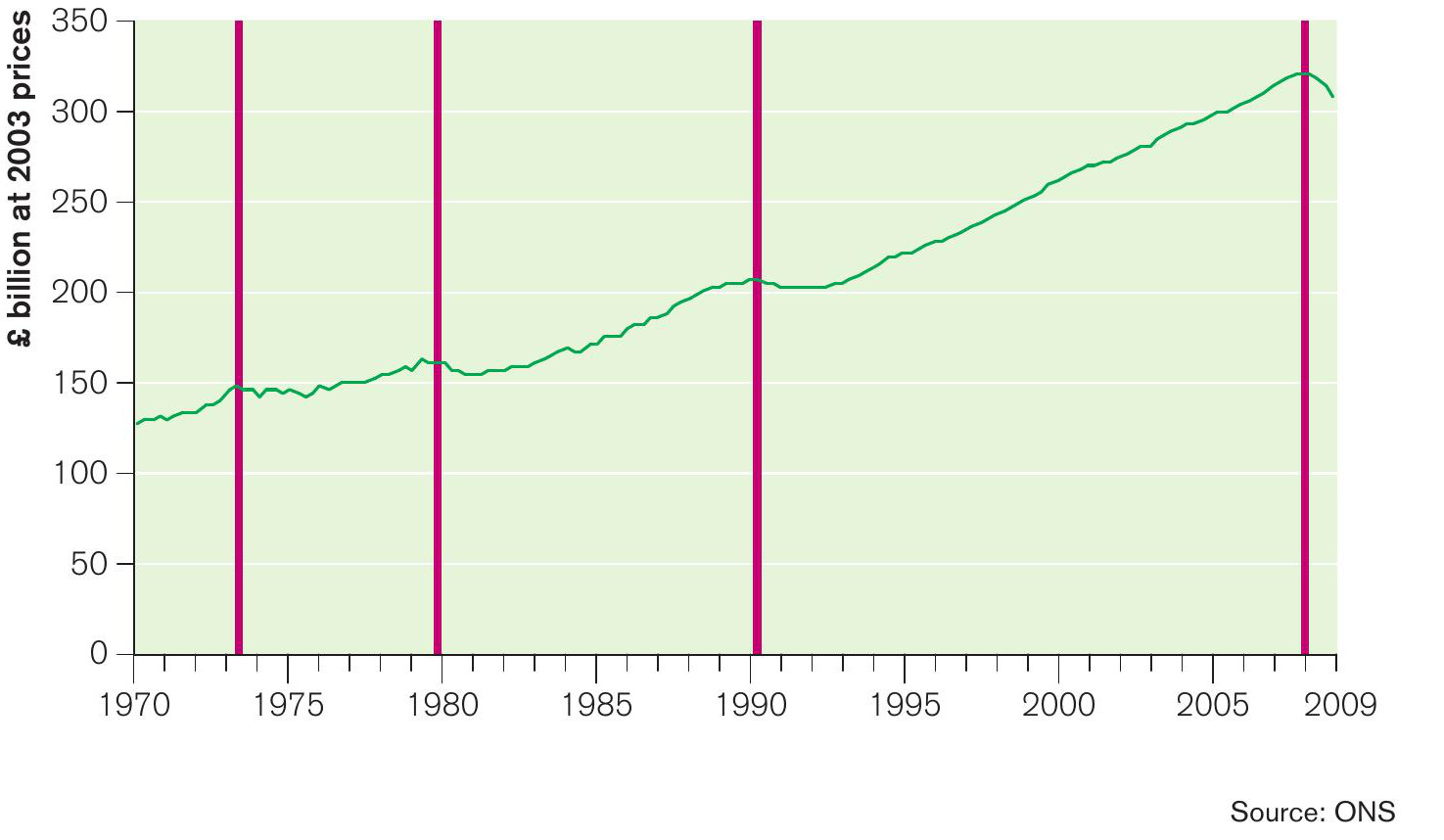
Arecession consists of a sustained downturn in the level of economic activity. The formal definition used most often is that a recession occurs when there have been two or more consecutive declines in the level of gross domestic product (GDP). The definition of GDP is the real, or constant, price measure that has been seasonally adjusted to allow for normal seasonal patterns in economic activity. Most recessions last a lot longer than two quarters, but this acts as a minimum criterion, allowing us to distinguish purely random changes in economic activity from a genuine sustained downturn.
It can hardly have escaped the attention of anyone reading the newspapers that recession is currently a hot topic in discussions of both economics and politics. This is because the UK has entered recession for the first time in nearly two decades. Given that it has been such a long time since we were last in recession, the experience is perhaps even more painful than it otherwise might be. As a result, the uncertainty about such issues as the possible rise in unemployment and the prospects for the government’s budget deficit are leading to something close to panic among policymakers.
Your organisation does not have access to this article.
Sign up today to give your students the edge they need to achieve their best grades with subject expertise
Subscribe




